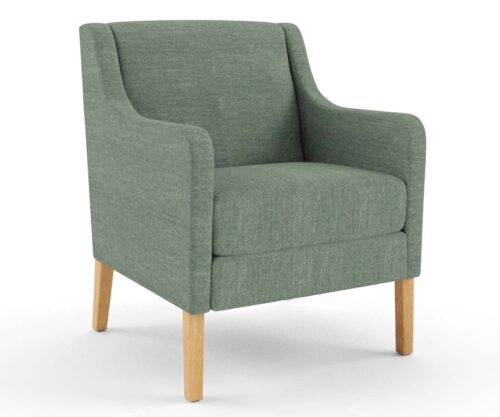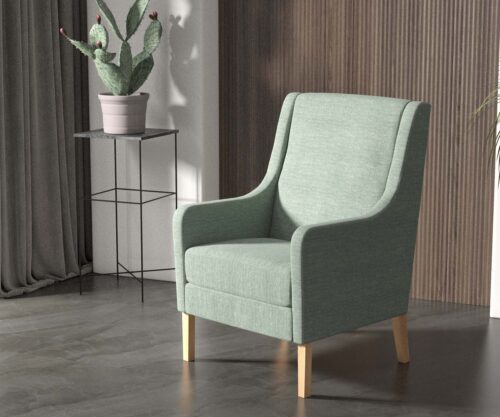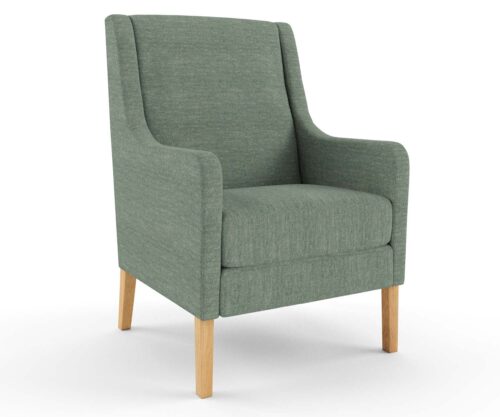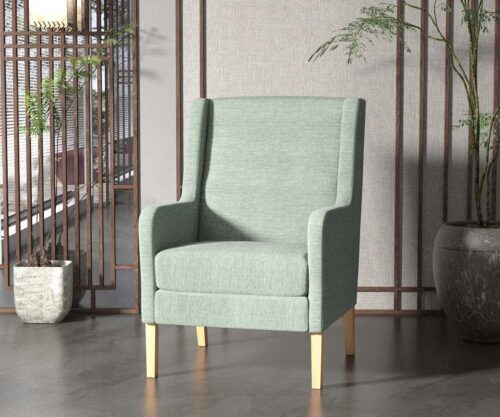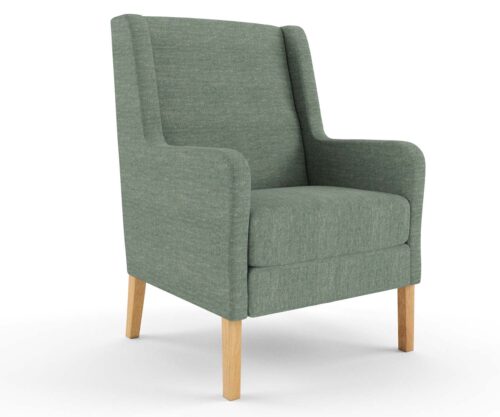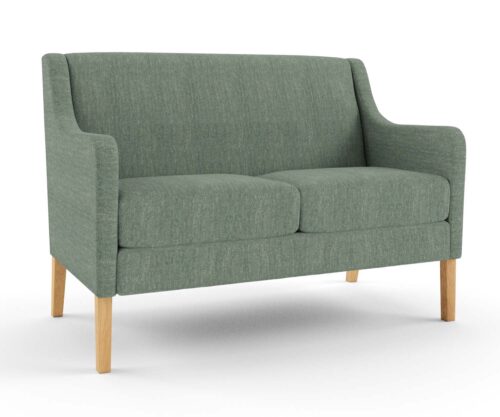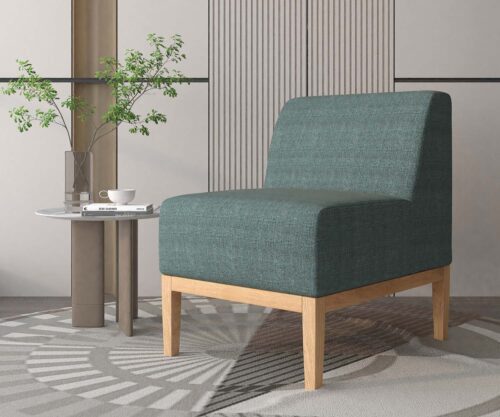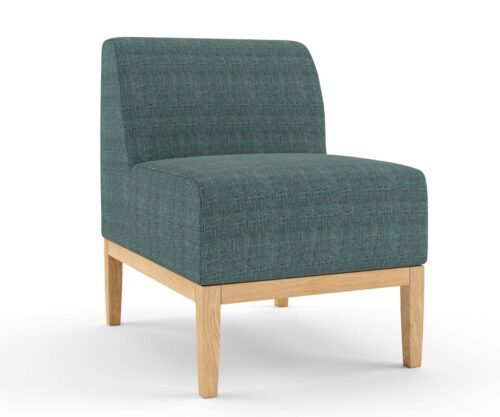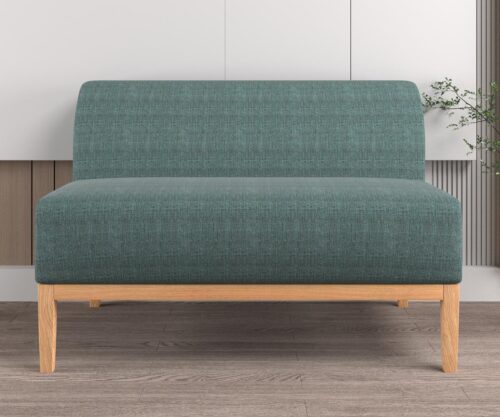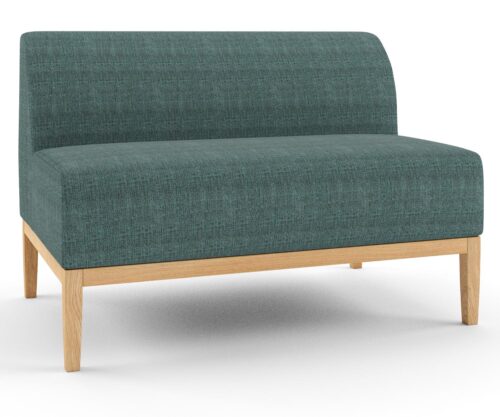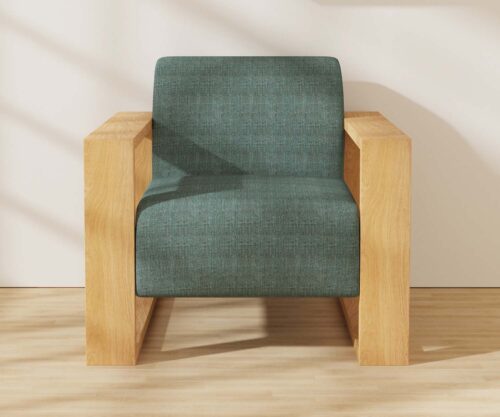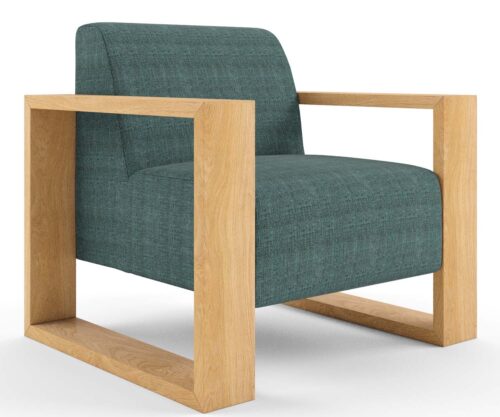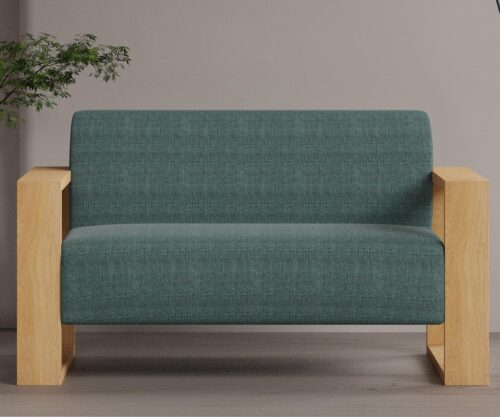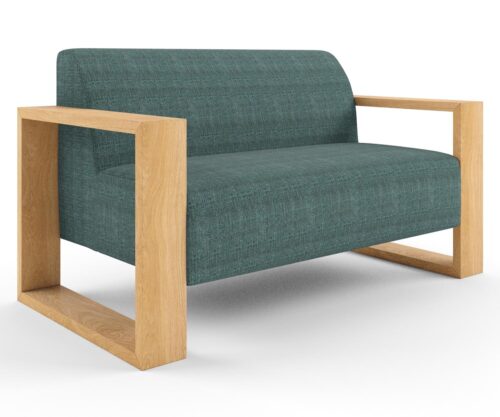Designing the Future of Aged Care: A Look at Australia’s Draft National Aged Care Design Principles and Guidelines

Australia’s aging population poses significant challenges for the government, healthcare providers, and the aged care industry. To address these challenges and ensure that older Australians receive the best possible care, the Australian Government has introduced the draft National Aged Care Design Principles and Guidelines.
In this blog post, we’ll break down these principles and guidelines, discussing their development, structure, application, and the personas they aim to serve.
Background and Development
The National Aged Care Design Principles and Guidelines are the result of extensive research and consultation. They build upon decades of work in dementia design and incorporate internationally recognized approaches to creating environments for older people. The principles of environmental design for dementia, developed in the 1980s and 90s, continue to be relevant and influential.
These guidelines are not limited to dementia care; they also benefit those with age-related health and care needs. They address the diverse needs of residents, acknowledging that many older Australians live with dementia or require mobility assistance.
Importantly, the development process involved rigorous literature reviews and extensive input from various stakeholders, including older Australians, families, care providers, architects, healthcare professionals, and technical experts.
Structure
The Design Principles and Guidelines are designed for easy navigation and practical use. They are divided into four principles, each focusing on different aspects of aged care design:
- Design Principle 1 – Enable the Person: To maintain the health, wellbeing, and identity of individuals.
- Design Principle 2 – Cultivate a Home: Creating a familiar environment that fosters privacy, control, and a sense of belonging.
- Design Principle 3 – Access the Outdoors: Promoting outdoor engagement with nature.
- Design Principle 4 – Connect with Community: Encouraging residents to connect with family, friends, and the broader community.
Each principle contains guidelines that address specific design challenges, offering practical solutions supported by evidence-based rationales and real-life scenarios.
Application
These guidelines are adaptable to various aged care homes and resident circumstances. They emphasize co-design, involving all stakeholders in the process to ensure a shared vision is developed. Cultural diversity, workforce support, environmental sustainability, infection control, and technology integration are also key considerations.
It’s worth noting that these guidelines do not replace existing regulations but are designed to harmonize with them. They aim to create environments that adhere to existing safety standards and provide exceptional care simultaneously.
Personas
To humanize the guidelines and make them relatable, they include fictional personas. These personas represent different residents and care workers, allowing designers and caregivers to better understand users’ needs, experiences, behaviors, and goals.
- Anne, resident, 96: A former florist from regional Victoria with limited mobility.
- Bianca, resident, 85: An Italian migrant who loves nature, dogs, and faces macular degeneration and dementia.
- Charlie, resident, 76: Originally from Hong Kong, living with frontotemporal dementia and hearing impairment.
- Dave, care worker, 52: A former mechanic turned caregiver who loves cooking and music.
- Eleesha, care worker, 26: A Filipino registered nurse in training with a young child.
- Francine, aged care home manager, 48: In charge of operations, care, and building works, hailing from Sri Lanka.
By embodying these personas, the guidelines encourage empathy and a better understanding of the diverse needs of aged care residents and staff.
A Closer Look at Furniture Guidelines for Aged Care
In our exploration of Australia’s National Aged Care Design Principles and Guidelines, it’s crucial to dive into specific aspects of aged care environments that directly impact the well-being of residents. Guideline 1.9, “Supportive Seating,” addresses the importance of furniture choices and positions in promoting rest, comfort, and function within aged care facilities.
Guideline 1.9 – Supportive Seating
The primary aim of Guideline 1.9 is to ensure that seating options within aged care environments are not just functional but also supportive and comfortable. Here’s a breakdown of the key elements within this guideline:
- Provide Additional Seating Space: When space permits, it’s recommended to incorporate additional seating areas, especially in long corridors. These spaces serve as resting points, offering residents a chance to take a break during walks or simply enjoy some downtime. Additionally, consider integrating seating areas at corridor ends, view points, and where there are changes in direction within the facility.
- Comfortable and Varied Seating: The seating provided should be comfortable, easy to see, and domestic in style, creating a sense of familiarity for residents. Chairs with arms are preferred as they offer support and make it easier for residents to sit and stand. Variation in seating types accommodates different ergonomic needs and personal preferences.
- Consider Fixed Seating: In areas with limited space, fixed seating can be a practical solution. It ensures that seating is always available and doesn’t obstruct walkways.
Why Is Supportive Seating Important?
The vast majority of aged care residents face mobility challenges, which can be exacerbated by poorly designed chairs or incorrect placement. Inadequate seating can hinder residents’ movement and independence, effectively becoming a form of restraint. Properly placed seating encourages residents to walk more, boosting their confidence and mobility.
The Right Seating Enhances Comfort and Functionality
Choosing the right seating options has a significant impact on residents’ comfort and well-being. It reduces agitation, restless behavior, and incontinence while promoting socialization. Residents often use cushions and pillows to alleviate discomfort, emphasizing the need for comfortable seating.
Residents tend to prefer chairs that are taller than the recommended height for older people and those with armrests. Additionally, outdoor seating options should be available to encourage residents to use outdoor areas.
Outcomes and Checklist
Implementing these seating guidelines can lead to positive outcomes. For instance, reorganizing dining room furniture to accommodate residents like Anne, who require specialized seating, can enhance their engagement and overall experience. Staff, like Eleesha, become more attuned to individual resident needs in shared spaces.
To ensure that these seating guidelines are followed effectively, there is a checklist that includes items like arranging seating to allow easy access, providing supportive cushions, offering seating at regular intervals, and ensuring fabric choices are easy to clean.
In conclusion, supportive seating is a critical aspect of aged care design that directly impacts the comfort, mobility, and overall well-being of residents. By adhering to Guideline 1.9 and its accompanying checklist, aged care facilities can create environments that prioritize the physical and emotional needs of their residents.
Appropriate Furniture Within Aged Care Settings
Australia’s National Aged Care Design Principles and Guidelines are transforming the landscape of aged care environments, with a keen focus on resident well-being and quality of life. As we continue to explore these guidelines, we delve into Guideline 2.8, which sheds light on the importance of appropriate furniture within aged care settings.
Guideline 2.8 – Appropriate Furniture
Guideline 2.8 underscores the significance of furniture that is not only functional but also domestic in appearance, ensuring it aligns with the resident’s sense of familiarity and purpose within their living spaces. Here’s a closer look at this crucial guideline:
Robust and Ergonomic Furniture
The guideline advocates for the provision of furniture that is robust, ergonomic, and reminiscent of a domestic setting. The choice of furniture should aid residents in recognizing their rooms and understanding the activities happening within them.
Why Is Appropriate Furniture Important?
The selection of furniture can profoundly impact how residents perceive their living environment. Furniture that is unfit for purpose or foreign in appearance can make a place feel less like home and hinder its usability.
For instance, Bianca’s dining room experience evokes memories of her school canteen due to the hard metal-framed chairs and plastic table covers. She yearns for the comfort and familiarity of her heavy oak dining table and matching dining chairs with green velvet upholstery.
Balancing Aesthetics and Functionality
Choosing the right furniture involves a delicate balance between aesthetics and functionality. Residents’ preferences may vary, so it’s essential to consider ergonomics, work health and safety, and the familiarity of the design. Furniture placement and selection play pivotal roles in ensuring both safety and dignity.
For instance, lower beds may reduce falls, but they can also become a form of restraint, highlighting the importance of thoughtful furniture choices.
Personal Items and Emotional Value
Furniture often holds great emotional value for residents, as it may remind them of their homes. Residents may prefer larger beds, which are more familiar to most adults. Suppliers specializing in fit-for-purpose furniture with a domestic appearance can be invaluable in this context.
Positive Outcomes and Checklist
Implementing these furniture guidelines can yield positive outcomes. Francine, for example, improved the dining room experience by introducing timber dining chairs with leather-look upholstery, making them both easy to clean and dignified. They also opted for fabric table covers that could be washed, enhancing the overall dining environment.
To ensure adherence to these guidelines, a checklist is provided, encompassing items such as arranging furniture to promote resident movement and engagement, regularly reviewing and maintaining furniture, using familiar and domestic-style furnishings, ensuring durability, and prioritizing easy-to-clean surfaces.
In conclusion, appropriate furniture plays a pivotal role in creating aged care environments that feel like home and promote resident well-being. Guideline 2.8 underscores the importance of balancing aesthetics, functionality, and familiarity to enhance the quality of life for aged care residents.
Australian Made Furniture that Follows the Australian National Aged Care Design Principles and Guidelines
Aged care chairs should be both supportive (Guideline 1.9 – Supportive Seating) and appropriate (Guideline 2.8 – Appropriate Furniture).
More News
Designing the Future of Aged Care: A Look at Australia’s Draft National Aged Care Design Principles and Guidelines

Australia’s aging population poses significant challenges for the government, healthcare providers, and the aged care industry. To address these challenges and ensure that older Australians receive the best possible care, the Australian Government has introduced the draft National Aged Care Design Principles and Guidelines.
In this blog post, we’ll break down these principles and guidelines, discussing their development, structure, application, and the personas they aim to serve.
Background and Development
The National Aged Care Design Principles and Guidelines are the result of extensive research and consultation. They build upon decades of work in dementia design and incorporate internationally recognized approaches to creating environments for older people. The principles of environmental design for dementia, developed in the 1980s and 90s, continue to be relevant and influential.
These guidelines are not limited to dementia care; they also benefit those with age-related health and care needs. They address the diverse needs of residents, acknowledging that many older Australians live with dementia or require mobility assistance.
Importantly, the development process involved rigorous literature reviews and extensive input from various stakeholders, including older Australians, families, care providers, architects, healthcare professionals, and technical experts.
Structure
The Design Principles and Guidelines are designed for easy navigation and practical use. They are divided into four principles, each focusing on different aspects of aged care design:
- Design Principle 1 – Enable the Person: To maintain the health, wellbeing, and identity of individuals.
- Design Principle 2 – Cultivate a Home: Creating a familiar environment that fosters privacy, control, and a sense of belonging.
- Design Principle 3 – Access the Outdoors: Promoting outdoor engagement with nature.
- Design Principle 4 – Connect with Community: Encouraging residents to connect with family, friends, and the broader community.
Each principle contains guidelines that address specific design challenges, offering practical solutions supported by evidence-based rationales and real-life scenarios.
Application
These guidelines are adaptable to various aged care homes and resident circumstances. They emphasize co-design, involving all stakeholders in the process to ensure a shared vision is developed. Cultural diversity, workforce support, environmental sustainability, infection control, and technology integration are also key considerations.
It’s worth noting that these guidelines do not replace existing regulations but are designed to harmonize with them. They aim to create environments that adhere to existing safety standards and provide exceptional care simultaneously.
Personas
To humanize the guidelines and make them relatable, they include fictional personas. These personas represent different residents and care workers, allowing designers and caregivers to better understand users’ needs, experiences, behaviors, and goals.
- Anne, resident, 96: A former florist from regional Victoria with limited mobility.
- Bianca, resident, 85: An Italian migrant who loves nature, dogs, and faces macular degeneration and dementia.
- Charlie, resident, 76: Originally from Hong Kong, living with frontotemporal dementia and hearing impairment.
- Dave, care worker, 52: A former mechanic turned caregiver who loves cooking and music.
- Eleesha, care worker, 26: A Filipino registered nurse in training with a young child.
- Francine, aged care home manager, 48: In charge of operations, care, and building works, hailing from Sri Lanka.
By embodying these personas, the guidelines encourage empathy and a better understanding of the diverse needs of aged care residents and staff.
A Closer Look at Furniture Guidelines for Aged Care
In our exploration of Australia’s National Aged Care Design Principles and Guidelines, it’s crucial to dive into specific aspects of aged care environments that directly impact the well-being of residents. Guideline 1.9, “Supportive Seating,” addresses the importance of furniture choices and positions in promoting rest, comfort, and function within aged care facilities.
Guideline 1.9 – Supportive Seating
The primary aim of Guideline 1.9 is to ensure that seating options within aged care environments are not just functional but also supportive and comfortable. Here’s a breakdown of the key elements within this guideline:
- Provide Additional Seating Space: When space permits, it’s recommended to incorporate additional seating areas, especially in long corridors. These spaces serve as resting points, offering residents a chance to take a break during walks or simply enjoy some downtime. Additionally, consider integrating seating areas at corridor ends, view points, and where there are changes in direction within the facility.
- Comfortable and Varied Seating: The seating provided should be comfortable, easy to see, and domestic in style, creating a sense of familiarity for residents. Chairs with arms are preferred as they offer support and make it easier for residents to sit and stand. Variation in seating types accommodates different ergonomic needs and personal preferences.
- Consider Fixed Seating: In areas with limited space, fixed seating can be a practical solution. It ensures that seating is always available and doesn’t obstruct walkways.
Why Is Supportive Seating Important?
The vast majority of aged care residents face mobility challenges, which can be exacerbated by poorly designed chairs or incorrect placement. Inadequate seating can hinder residents’ movement and independence, effectively becoming a form of restraint. Properly placed seating encourages residents to walk more, boosting their confidence and mobility.
The Right Seating Enhances Comfort and Functionality
Choosing the right seating options has a significant impact on residents’ comfort and well-being. It reduces agitation, restless behavior, and incontinence while promoting socialization. Residents often use cushions and pillows to alleviate discomfort, emphasizing the need for comfortable seating.
Residents tend to prefer chairs that are taller than the recommended height for older people and those with armrests. Additionally, outdoor seating options should be available to encourage residents to use outdoor areas.
Outcomes and Checklist
Implementing these seating guidelines can lead to positive outcomes. For instance, reorganizing dining room furniture to accommodate residents like Anne, who require specialized seating, can enhance their engagement and overall experience. Staff, like Eleesha, become more attuned to individual resident needs in shared spaces.
To ensure that these seating guidelines are followed effectively, there is a checklist that includes items like arranging seating to allow easy access, providing supportive cushions, offering seating at regular intervals, and ensuring fabric choices are easy to clean.
In conclusion, supportive seating is a critical aspect of aged care design that directly impacts the comfort, mobility, and overall well-being of residents. By adhering to Guideline 1.9 and its accompanying checklist, aged care facilities can create environments that prioritize the physical and emotional needs of their residents.
Appropriate Furniture Within Aged Care Settings
Australia’s National Aged Care Design Principles and Guidelines are transforming the landscape of aged care environments, with a keen focus on resident well-being and quality of life. As we continue to explore these guidelines, we delve into Guideline 2.8, which sheds light on the importance of appropriate furniture within aged care settings.
Guideline 2.8 – Appropriate Furniture
Guideline 2.8 underscores the significance of furniture that is not only functional but also domestic in appearance, ensuring it aligns with the resident’s sense of familiarity and purpose within their living spaces. Here’s a closer look at this crucial guideline:
Robust and Ergonomic Furniture
The guideline advocates for the provision of furniture that is robust, ergonomic, and reminiscent of a domestic setting. The choice of furniture should aid residents in recognizing their rooms and understanding the activities happening within them.
Why Is Appropriate Furniture Important?
The selection of furniture can profoundly impact how residents perceive their living environment. Furniture that is unfit for purpose or foreign in appearance can make a place feel less like home and hinder its usability.
For instance, Bianca’s dining room experience evokes memories of her school canteen due to the hard metal-framed chairs and plastic table covers. She yearns for the comfort and familiarity of her heavy oak dining table and matching dining chairs with green velvet upholstery.
Balancing Aesthetics and Functionality
Choosing the right furniture involves a delicate balance between aesthetics and functionality. Residents’ preferences may vary, so it’s essential to consider ergonomics, work health and safety, and the familiarity of the design. Furniture placement and selection play pivotal roles in ensuring both safety and dignity.
For instance, lower beds may reduce falls, but they can also become a form of restraint, highlighting the importance of thoughtful furniture choices.
Personal Items and Emotional Value
Furniture often holds great emotional value for residents, as it may remind them of their homes. Residents may prefer larger beds, which are more familiar to most adults. Suppliers specializing in fit-for-purpose furniture with a domestic appearance can be invaluable in this context.
Positive Outcomes and Checklist
Implementing these furniture guidelines can yield positive outcomes. Francine, for example, improved the dining room experience by introducing timber dining chairs with leather-look upholstery, making them both easy to clean and dignified. They also opted for fabric table covers that could be washed, enhancing the overall dining environment.
To ensure adherence to these guidelines, a checklist is provided, encompassing items such as arranging furniture to promote resident movement and engagement, regularly reviewing and maintaining furniture, using familiar and domestic-style furnishings, ensuring durability, and prioritizing easy-to-clean surfaces.
In conclusion, appropriate furniture plays a pivotal role in creating aged care environments that feel like home and promote resident well-being. Guideline 2.8 underscores the importance of balancing aesthetics, functionality, and familiarity to enhance the quality of life for aged care residents.
Australian Made Furniture that Follows the Australian National Aged Care Design Principles and Guidelines
Aged care chairs should be both supportive (Guideline 1.9 – Supportive Seating) and appropriate (Guideline 2.8 – Appropriate Furniture).
Commercial furniture by room
Based in Brisbane, we’re an Australian manufacturer of aged care furniture, retirement living furniture, hospital & healthcare furniture, hotel & accommodation furniture and student accommodation furniture. We also supply a range of commercial office furniture.
Discover the FHG Look Book: Your Source of Inspiration for Quality Australian-Made Commercial Furniture
- Quality Craftsmanship: See why we’ve been a trusted partner for over 25 years.
- Local Excellence: Learn how our Brisbane team ensures the highest standards.
- Inspiration and Ideas: Find innovative furniture solutions for any environment.
Don’t miss the opportunity to transform your commercial space with FHG’s expertly crafted furniture. Download the FHG Look Book today and start your journey towards exceptional design and quality.


